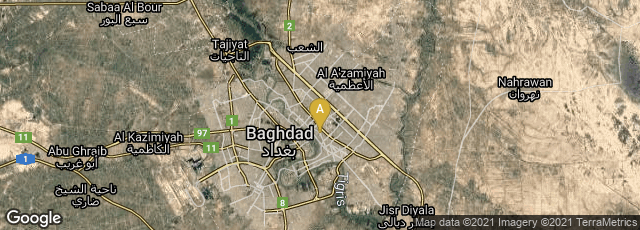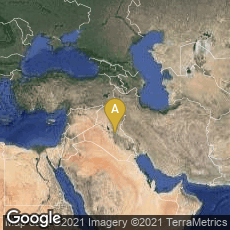

A: Baghdad, Al Saadoon Park, Baghdad Governorate, Iraq
In 984 Arabian mathematician, and physicist Ibn Sahl (Abu Sa`d al-`Ala' ibn Sahl), associated with the Abbasid court of Baghdad, wrote a treatise On Burning Mirrors and Lenses, setting out his understanding of how curved mirrors and lenses bend and focus light. In this work Ibn Sahl is credited with first discovering the law of refraction, usually called Snell's law.
"Ibn Sahl used the law of refraction to derive lens shapes that focus light with no geometric aberrations, known as anaclastic lenses. In the reproduction of the figure from Ibn Sahl's manuscript, the critical part is the right-angled triangle. The inner hypotenuse shows the path of an incident ray and the outer hypotenuse shows an extension of the path of the refracted ray if the incident ray met a crystal whose face is vertical at the point where the two hypotenuses intersect. According to Rashed, the ratio of the length of the smaller hypotenuse to the larger is the reciprocal of the refractive index of the crystal.
"The lower part of the figure shows a representation of a plano-convex lens (at the right) and its principal axis (the intersecting horizontal line). The curvature of the convex part of the lens brings all rays parallel to the horizontal axis (and approaching the lens from the right) to a focal point on the axis at the left.
"In the remaining parts of the treatise, Ibn Sahl dealt with parabolic mirrors, ellipsoidal mirrors, biconvex lenses, and techniques for drawing hyperbolic arcs. Ibn Sahl's treatise was used by Ibn al-Haitham [Alhazen]" (Wikipedia article on Ibn Sahl, accessed 04-24-2009).
R. Rashed found the two parts of Ibn Sahl's manuscript separated in two libraries, reassembled it, translated it, and published it in Géométrie et dioptrique au Xe siècle: Ibn Sahl, al-Quhi et Ibn al-Haytham (1993).